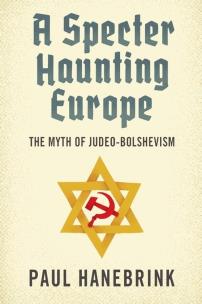- Regulamin
- Koszty dostawy
- Kontakt
- Dziś w ofercie 235 944 produkty
KSIĄŻKI
- Albumy
- Beletrystyka
- Biografie
- Dla dzieci i młodzieży
- Edukacja
- Ekonomia i biznes
- Ezoteryka
- Historia
- Informatyka
- Kalendarze
- Komiksy
- Kryminał i sensacja
- Kultura i sztuka
- Literatura faktu
- Literatura kobieca
- Literatura piękna
- Medycyna
- Nauka języków obcych
- Nauki humanistyczne
- Nauki przyrodnicze
- Nauki ścisłe
- Podręczniki
- Poradniki
- Prawo i administracja
- Przewodniki i podróże
- Psychologia
- Religia
- Sport
- Technika
- Zdrowie i uroda
ZABAWKI
- Artykuły dla niemowląt
- Bączki
- Bujaki i skoczki
- Ciągnij / pchaj
- Dla niemowlaka
- Grzechotki i gryzaki
- Karuzele i pozytywki
- Maty i centra zabaw
- Projektory i lampki
- Sortery i piramidki
- Zabawki
- Edukacyjne i kreatywne
- Figurki
- Klocki
- Lalki
- Pojazdy
- Pluszaki i maskotki
- Sport i rekreacja
- Zabawa w dom
- Zabawki drewniane
- Puzzle
- Do 200 elementów
- 201-500 elementów
- 501-1000 elementów
- Ponad 1000 elementów
- Puzzle 3D
ART. PAP
- Artykuły biurowe
- Artykuły piśmiennicze
- Bloczki i kartki samoprzylepne
- Dziurkacze
- Kalkulatory
- Nożyczki i nożyki
- Skoroszyty
- Teczki
- Wizytowniki
- Zszywacze
- Artykuły szkolne
- Akcesoria szkolne
- Modelowanie
- Notatniki i zeszyty
- Piórniki
- Plecaki i torby
- Pojemniki na śniadanie
- Pomoce naukowe
- Przybory matematyczne
- Przybory rysunkowe
- Upominki i gadżety
- Akcesoria do książek
- Artykuły balowe
- Breloki i zawieszki
- Drobiazgi, różności
- Kubki
- Oferta Świąteczna
- Papeteria, kartki i naklejki
- Skarpetki Many Mornings
- Upominki
GRY
MULTIMEDIA
- Audiobooki
- Beletrystyka
- Biografie i wspomnienia
- Dla dzieci i młodzieży
- Fantastyka
- Filozofia i religia
- Historia
- Literatura faktu i reportaż
- Poradniki
- Sensacja i kryminał
- Filmy DVD/BD
- Animowane
- Biograficzne
- Fantasy
- Horrory
- Komedie
- Romanse
- Science Fiction
- Sensacyjne / kino akcji
- Thrillery
- Muzyka CD
- Alternatywna
- Blues
- Dla dzieci
- Jazz
- Klasyczna
- Piosenka aktorska i poetycka
- Pop
- Rock
- Świąteczna i kolędy
- Akcesoria GSM
- Głośniki
- Kable i adaptery
- Klawiatury
- Myszy
- Słuchawki
PROMOCJE
ZDROWIE
LEGO
- multiszop.pl \
- KSIĄŻKI \
- Historia \
- Militaria

Specter Haunting Europe
Autor: Hanebrink Paul
Wydawca:
Belknap Harvard
ISBN:
9780674047686
EAN:
9780674047686
oprawa:
Twarda z obwolutą
podtytuł:
The Myth of Judeo-Bolshevism
format:
14.0x22.0cm
język:
angielski
liczba stron:
356
rok wydania:
2018
(0) Sprawdź recenzje
Opis produktu
Zasady bezpieczeństwa
The first comprehensive account of the evolution and exploitation of the Judeo-Bolshevik myth, from its origins to the present day.
For much of the twentieth century, Europe was haunted by a threat of its own imagining: Judeo-Bolshevism. This myth—that Communism was a Jewish plot to destroy the nations of Europe—was a paranoid fantasy, and yet fears of a Jewish Bolshevik conspiracy took hold during the Russian Revolution and spread across Europe. During World War II, these fears sparked genocide.
Paul Hanebrink’s history begins with the counterrevolutionary movements that roiled Europe at the end of World War I. Fascists, Nazis, conservative Christians, and other Europeans, terrified by Communism, imagined Jewish Bolsheviks as enemies who crossed borders to subvert order from within and bring destructive ideas from abroad. In the years that followed, Judeo-Bolshevism was an accessible and potent political weapon.
After the Holocaust, the specter of Judeo-Bolshevism did not die. Instead, it adapted to, and became a part of, the Cold War world. Transformed yet again, it persists today on both sides of the Atlantic in the toxic politics of revitalized right-wing nationalism. Drawing a worrisome parallel across one hundred years, Hanebrink argues that Europeans and Americans continue to imagine a transnational ethno-religious threat to national ways of life, this time from Muslims rather than Jews.
CENA:
95,31
zł
Cena detaliczna:
119,75 zł
20%
rabatu
Najniższa cena z ostatnich 30 dni: 95,31 zł
Produkt niedostępny
Uwaga!!!
Ten produkt jest zapowiedzią. Realizacja Twojego zamówienia ulegnie przez to wydłużeniu do czasu premiery tej pozycji. Czy chcesz dodać ten produkt do koszyka?


Wybierz wariant produktu
